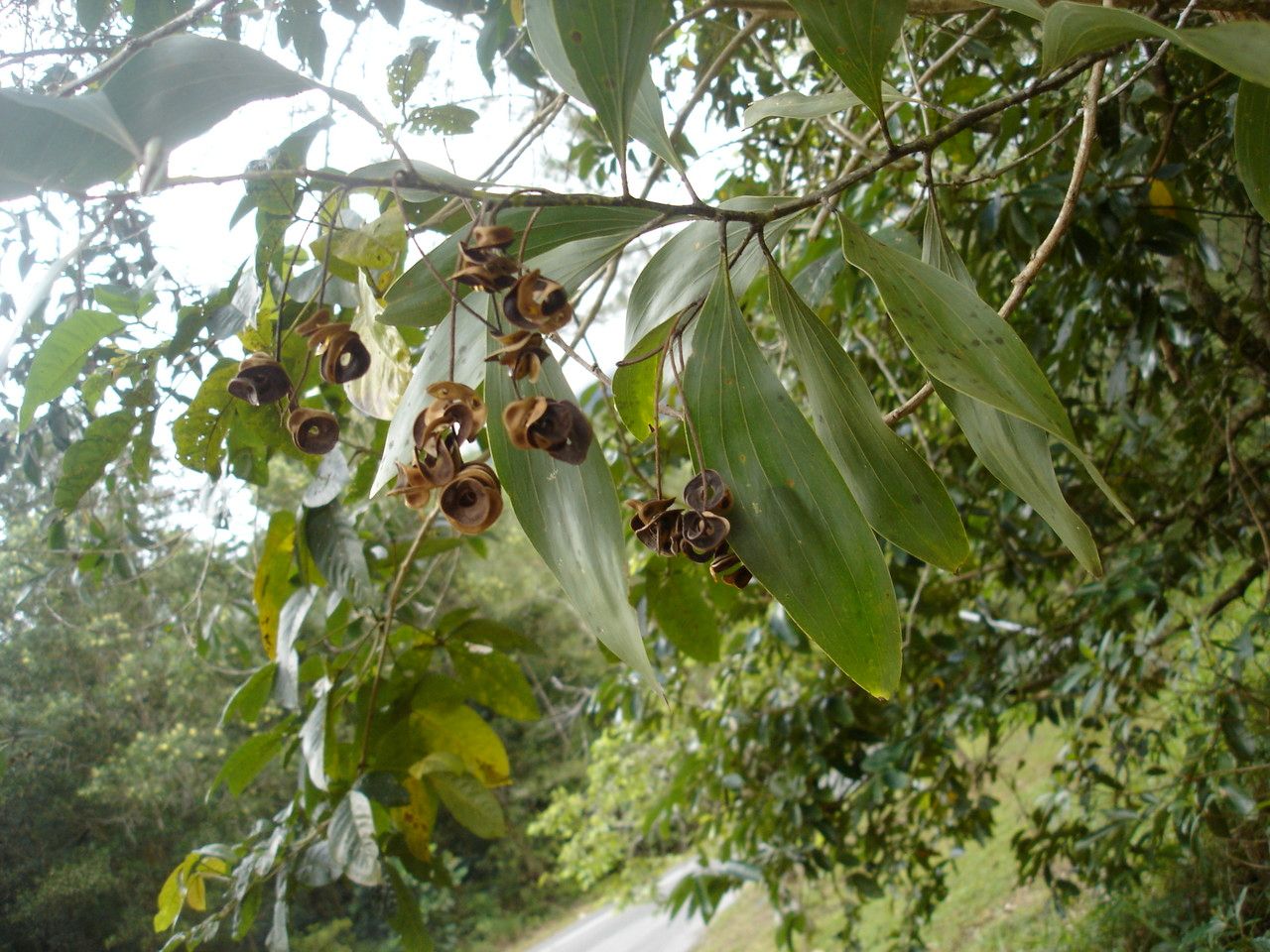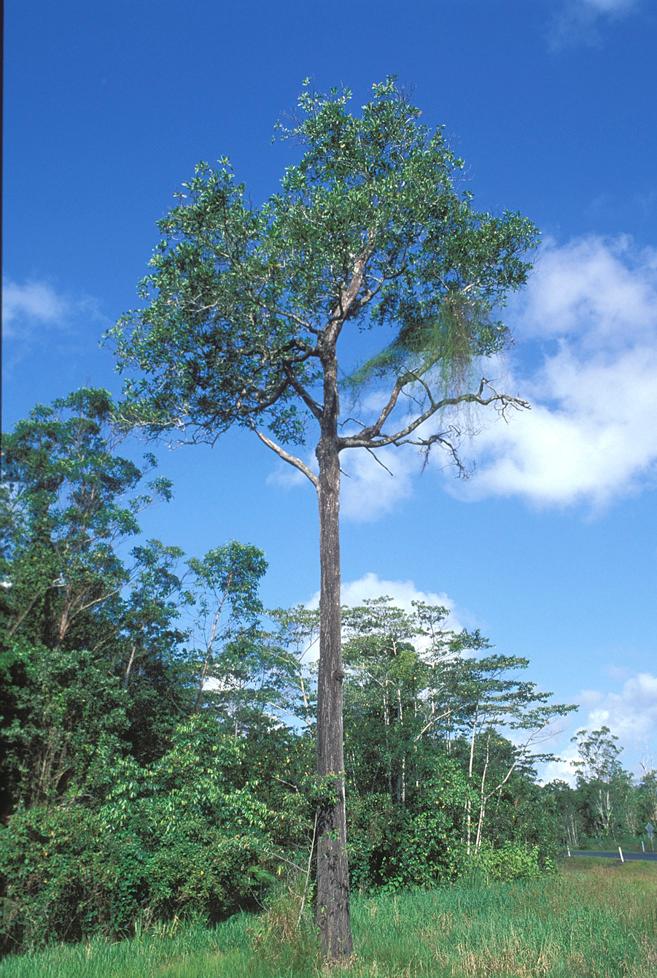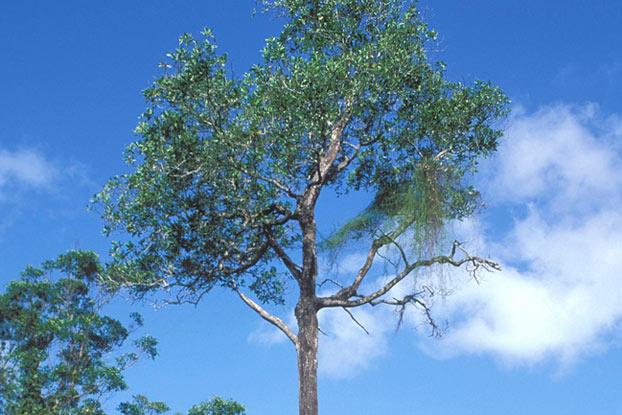Mangium
acacia mangium
Also known as: ["Black Wattle","Honduras Koa"]
Overview
A fast-growing, evergreen tree native to tropical regions, valued for its timber and ecological benefits.
Benefits & Perks
["fast growing","wildlife attractant (bees, butterflies, birds)","drought tolerant"]
Botanical Classification
| Phylum: | Magnoliophyta |
| Class: | Magnoliopsida |
| Order: | Fabales |
| Family: | Fabaceae |
| Genus: | Acacia |
| Botanical Name: | Acacia mangium |
Plant Characteristics
Basic Information
- Category: Trees
- Suitable Location: outdoor planting in tropical or subtropical regions, prefers open spaces
- Suitable For:
- Is Weed: No
- Allergenicity: low
Environmental Needs
- Climate: {"temperatureRange":"15–35°C"}
- Hardiness: {"zones":"10–12"}
- Misting: rarely required, only if ambient humidity is very low
- Drainage: Fast-draining to prevent waterlogging.
- Soil Type: Well-draining, slightly acidic soil with organic matter; cactus or succulent mix works well.
Maintenance Level
- Maintenance Level: moderate
- Toughness Level: high
- Pruning Frequency: Annually in late winter or early spring before new growth begins.
- Pruning Intensity: Moderate; remove up to one-third of old growth to rejuvenate the plant.
Care Details
Ideal Sunlight Coverage:
Full sun (6–8 hours of direct sunlight daily); tolerates partial shade but may grow less vigorously.
Sunlight Tolerance Tips:
Acclimate plants to full sun gradually to avoid scorching. Protect from intense midday sun in hot climates. Indoors, place near a south-facing window.
Care Requirements
Care Difficulty
moderatemoderate
Sunlight
full sun
Rotate plant for even growth; use sheer curtains to filter intense light; monitor for sunburn signs.
Watering
every 7–10 days during dry periods, less frequently in rainy seasons
Water thoroughly until runoff, allow soil to dry slightly between waterings, avoid overhead watering to prevent fungal issues.
Soil
well-drained, sandy or loamy soil with moderate fertility
pH: Slightly acidic (pH 5.5–6.5).
Avoid heavy clay soils; ensure pots have drainage holes; test soil pH periodically.
Temperature
Thrives in warm temperatures (20–30°C); tolerates brief periods below 10°C but prefers frost-free conditions.
Avoid sudden temperature changes; protect from frost; maintain consistent warmth during growth periods.
Fertilizing
every 2–3 months during active growth, with balanced slow-release fertilizer
Fertilize at half-strength during establishment; avoid fertilizing dry soil; flush soil occasionally to prevent salt buildup.
Propagation
Methods
Stem cuttings or seed propagation; cuttings root more reliably under controlled conditions.
Step-by-Step Propagation Guide
- Take 10–15 cm cuttings.
- Apply rooting hormone.
- Plant in medium.
- Maintain humidity.
- Provide warmth.
Best Time: Spring or early summer when temperatures are warm and humidity is moderate.
Environment
Warm (25–30°C), humid (60–70%), and bright but indirect light.
Medium
Well-draining mix of perlite and peat moss or cactus mix.
Hormone
Rooting hormone is recommended to improve success rates.
Timeline
Cuttings may root in 4–8 weeks; seedlings take 2–3 months to establish.
Tools Needed
Pruning shears, rooting hormone, propagation tray, humidity dome, heat mat.
Quick Tips
Use healthy, non-flowering stems; maintain consistent moisture; avoid direct sunlight during rooting.
Pruning & Repotting
Pruning Guide
Method
Use clean cuts just above a bud or lateral branch; avoid leaving stubs.
Pruning Plan
Prune to shape the plant, remove dead or diseased wood, and encourage bushier growth.
Tools
Pruning shears, loppers, disinfectant (e.g., rubbing alcohol).
Checklist
Disinfect tools; prune during dormancy; remove dead/diseased wood; shape evenly.
Repotting Guide
Best Season
Early spring before active growth starts.
Pot Size
Increase pot size by 2–5 cm in diameter; avoid oversized pots.
Method
Remove plant gently; trim roots if necessary; use fresh, well-draining soil; ensure proper drainage.
Suggestions
Repot every 2–3 years or when roots fill the container; Acacia mangium grows rapidly and benefits from fresh soil.
Checklist
Prepare new pot with drainage holes; trim roots if crowded; use fresh soil mix; water lightly after repotting.
Advanced Care Tips
Watering Mastery
Watering Checklist
Check soil moisture before watering; water deeply; ensure proper drainage; avoid wetting foliage.
How to Apply Water Properly
Water at the base of the plant, ensuring moisture reaches the root zone. Water early in the morning to minimize evaporation and allow foliage to dry.
Watering Schedule Tips
Water deeply once a week during the growing season; reduce frequency in winter to prevent root rot. Adjust based on rainfall and soil moisture.
Soil Improvement
Add perlite or coarse sand for drainage; incorporate compost for fertility; ensure good aeration.
Temperature Stress Management
Signs of Temperature Issues
Chlorosis, leaf drop, stunted growth, or browning leaf edges in extreme heat or cold.
Cold Stress
Low temperatures slow growth and may cause leaf drop or dieback; prolonged cold can be fatal.
Solution: Protect with frost cloth or move to a sheltered location; avoid overwatering in cold conditions.
Hot Stress
Excessive heat can lead to wilting, leaf scorch, or reduced photosynthesis.
Solution: Provide shade during peak heat, increase watering, and ensure good air circulation.
Fertilizing Guide
Fertilizing Checklist
Use appropriate fertilizer; apply at correct dilution; fertilize during active growth; avoid overfertilization.
Fertilizing Method
Use a balanced, slow-release fertilizer in spring; avoid high-nitrogen formulas. Reduce or stop fertilizing in winter.
Common Problems & Solutions
Toxicity Warning
Cats
Slightly ToxicCats may experience mild gastrointestinal irritation if they consume the seeds or bark of Acacia mangium. The toxic compounds can cause digestive upset, though severe reactions are rare.
⚠️ Symptoms:
🌿 Toxic Parts:
⚡ Toxic If:
if eaten
Dogs
Slightly ToxicIn dogs, ingestion of Acacia mangium seeds or bark can lead to mild gastrointestinal upset due to the presence of tannins and other irritants. Symptoms are typically not severe but can cause discomfort.
⚠️ Symptoms:
🌿 Toxic Parts:
⚡ Toxic If:
if eaten
Humans
Slightly ToxicAcacia mangium contains compounds that can cause mild gastrointestinal distress when ingested in significant quantities. The seeds and bark are the primary toxic parts, containing tannins and other secondary metabolites that may irritate the digestive tract.
⚠️ Symptoms:
🌿 Toxic Parts:
⚡ Toxic If:
if eaten
Frequently Asked Questions
Q: Is Acacia mangium suitable for urban planting?
A: Yes, it is suitable for urban planting due to its fast growth and adaptability to various soil types.
Q: Does Acacia mangium require frequent pruning?
A: Pruning is recommended to maintain shape and health, but it is not overly demanding.
Q: Can Acacia mangium be grown in containers?
A: While possible, it is best suited for open ground due to its large size and root system.
Quick Reference
| Family: | Fabaceae |
| Care: | moderate |
| Light: | full sun |
| Water: | every 7–10 days during dry p |
Get Expert Care Tips
Download the Plantious app for personalized care reminders and plant identification!
Google Play App Store








